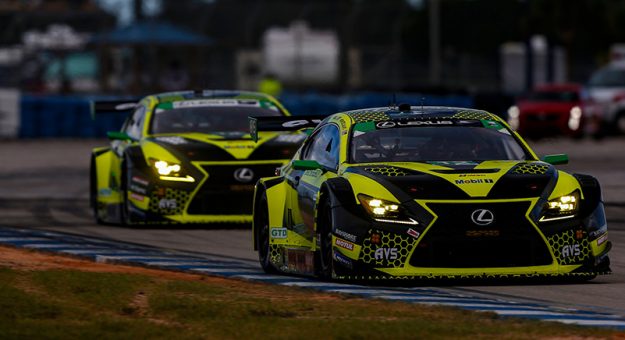By David Phillips
And now for something completely different.
The first IMSA WeatherTech SportsCar Championship trip to Charlotte Motor Speedway’s ROVAL (as opposed to the original 2.25-mile infield road course/oval used in the ’70s, ‘80s and 2000) puts every GT Le Mans (GTLM) and GT Daytona (GTD) competitor on a new and (relatively) level playing field. While many got a day’s test on the 10-turn, 2.32-mile oval/road course last month, no drivers expected to take part have raced on the current layout before and, of course, no teams have raced there, either.
While that would seem to place everyone on equal footing for the MOTUL 100% Synthetic Grand Prix, it’s never quite that simple.
We live in an age when manufacturers put state-of-the-art simulators at the disposal of their race teams. What’s more, some teams (most notably Corvette Racing) have had a chance to pick the brains of their NASCAR Cup Series counterparts (read “Chevrolet”) who have competed on the ROVAL the past two years and will do so again this weekend in the tripleheader that includes the WeatherTech Championship along with NASCAR’s Cup and Xfinity series.
As well, various commercial simulation services (iRacing, Assetto Corsa, Forza, etc.) include the Charlotte ROVAL in their catalogue of race circuits. Thus, most drivers and teams will arrive familiar with the layout, not to mention having worked with their race engineers to develop baseline setups that should only need fine-tuning once practice and qualifying commences.
Virtual Reality to Real Reality at Warp Speed
All that said, a tight schedule means real track time will be at a premium. Communication will be critical between drivers and engineers, engineers and mechanics and throughout teams from top to bottom (including Michelin’s tire engineers) for maximum productivity; to achieve quick qualifying times AND consistent performance over the course of a race stint.
Some will hit the moving targets better than others … and at different times. Don’t be surprised if a car that was blisteringly quick over a qualifying lap fades during the course of longer race stints, especially given that qualifying is set for 2 p.m. ET Saturday while the race start is slated for 8:05 p.m. that night – meaning, of course, dramatically different track temperatures.
Premium Pit Stops
With a race length of 100 minutes, shortest of the season, each car will likely make just one scheduled pit stop. That will place a premium on execution by the entire team. Drivers will have to hit their marks, be clean and precise in driver changes, have quick in and out laps, and, of course, the pit crews must be flawless.
Did we mention that the first time drivers will do “hot” pit stops on pit lane will be during the race itself? Also, given the short race time, track position will be at a premium. In addition to an abundance of “sharp elbow” racing, there will be little opportunity to regain lost ground via alternate strategies. In other words, expect a sprint from start to finish.
Rain, Anyone?
The Charlotte forecast calls for as much as an 80 percent chance of rain Saturday evening. A full wet race is one (entertaining) thing. But a race where the rain comes and goes (and even comes back again) is quite another. The outcome of a race run in ever-changing conditions could well be decided by who makes a timely call on switching from slicks to rain tires or vice-versa.
In that case, two-car teams will have an advantage as they’re able to make the tire switch on one car (most likely the lowest placed), monitor its progress and get feedback from the driver, then choose the ideal moment to swap tires on their lead car. Single-car teams can keep track of their competitors in the same manner but won’t have the benefit of real-time feedback from a driver on “alternate” tires.
